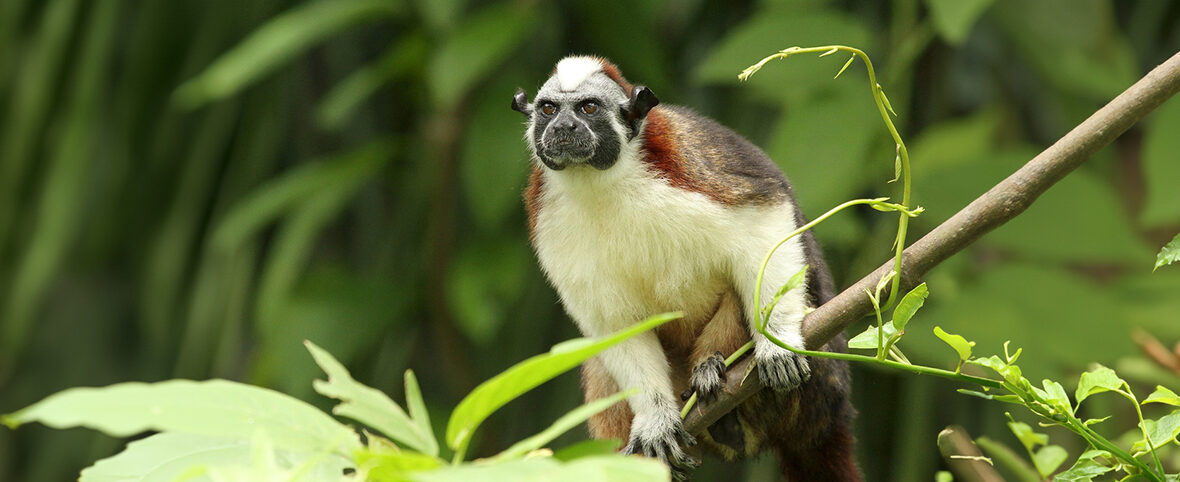
The Geoffroy’s tamarin, aka Panamanian, red-crested tamarin or rufous-naped tamarin, is a New World monkey (those found only in the Americas) and is only found in Panama and Colombia. They are Panama’s smallest primate species. Unfortunately, these primates face the threats of habitat loss and destruction at the hands of residential and commercial developments, as well as logging; hunting, for bush meat; and trapping, for sale on the illegal exotic pet market. They are listed as Near Threatened by the IUCN. Their populations are also decreasing.
First the Stats…
Scientific name: Saguinus geoffroyi
Weight: Up to 1 lb.
Length: Up to 9.4 inches, plus up to a 15.2 inch tail
Lifespan: Up to 13 years
Now on to the Facts!
1.) These primates are diurnal (active during the day).
2.) They are arboreal (spend most of their lives in trees). However, they do venture to the ground from time to time.
3.) The Geoffroy’s tamarins can be seen in troops of up to 9 individuals.
4.) Insects, plant exudates (sap), fruits, and other plant parts are all on the menu.
5.) They travel up to .16 acre a day in search of food.
But wait, there’s more on the Geoffroy’s tamarin!
6.) Communication consists of vocalizations such as trills, twitters, whistles, loud and/or soft sharp notes, sneezes, as well as long rasps. They also communicate physically via standing on their hind legs and engaging in piloerection (displaying goosebumps that erect the hairs on their body).
7.) The females signal their willingness to breed by rapidly coiling their tails.
Did you know…?
They are capable of leaping up to 16 feet from branch to branch!
8.) These primates are both polyandrous (females will mate with more than 1 male) and polygynous (1 male mates with more than 1 female).
9.) Females undergo up to a 145 day gestation (pregnancy) that yields either a single infant or twins.
10.) Infants weigh in at only 1.8 ounces!
But wait, there’s still more on the Geoffroy’s tamarin!
11.) Males tend to carry and groom infants more than females do. Older siblings have also been documented contributing to infant care; although the infants tend to gravitate towards mom and dad.
12.) Infants start moving about in up to 5 weeks. They also start eating solid food in up to 7 weeks.
13.) The infants are independent in up to 18 weeks and are completely weaned in up to 25 weeks.
Now a Short Geoffroy’s Tamarin Video!
Be sure to share & comment below! Also, check out the Critter Science YouTube channel. Videos added regularly!
Want to suggest a critter for me to write about? Let me know here.
Some source material acquired from: Wikipedia & IUCN
Photo credit: iNaturalist



